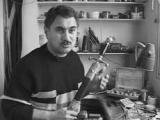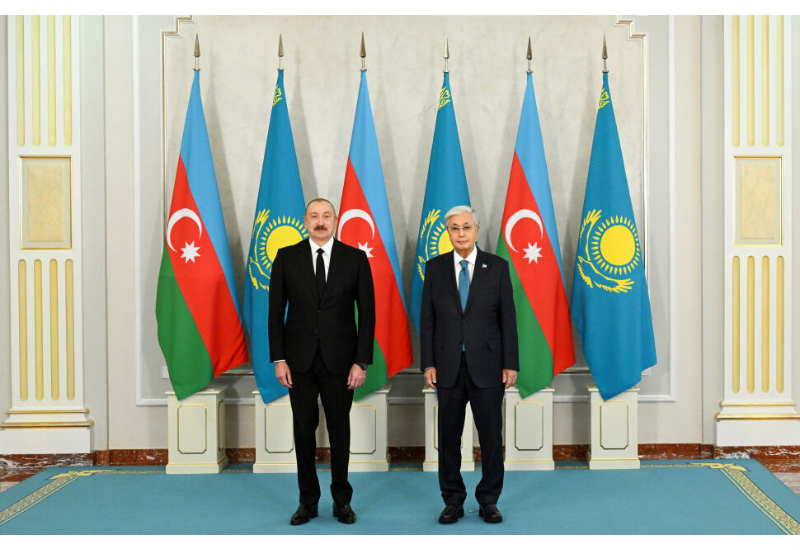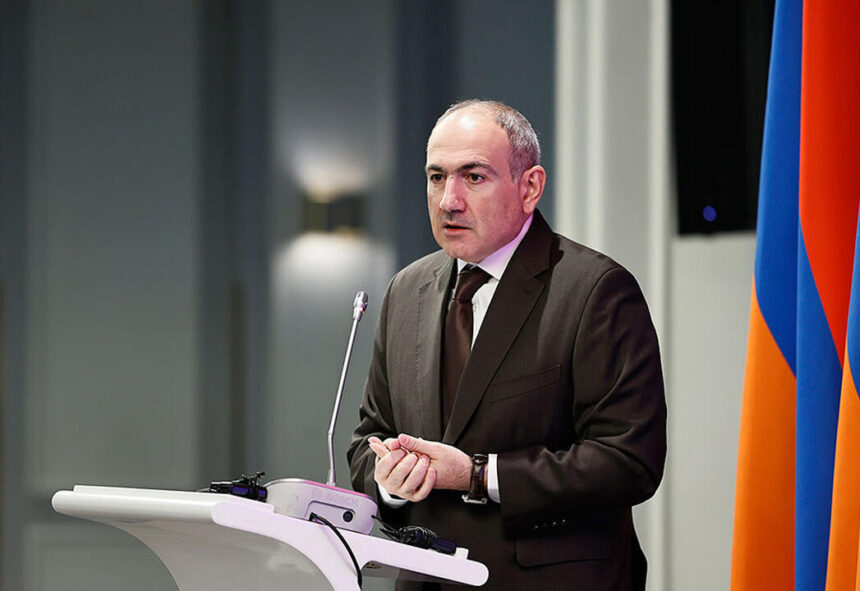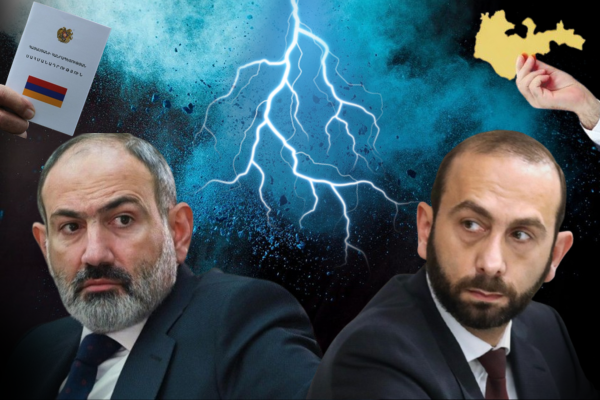|
|
TODAY.AZ / Society
Brandishing the Azeri sword
18 October 2005 [10:43] - TODAY.AZ

GANJA - With a gentle, snake like sound, the wide double-edged blade of a dagger smoothly flows out of a silver incrusted black sheath. Specks of daylight dance off the cold stainless steel from the tip to the hilt, which just like the sheath is covered with a silver pattern called shebeke.
At the bottom of the blade, in black enamel with golden Arabic letters is written -Ganja, Mubariz. This is the mark of Ganjivian master and artist Mubariz Akperov who is rebirthing the national tradition of arms making.
In past centuries, boys as early as nine years of age gained the right to bear a dagger on their belt, says Mubariz Akperov.
Each young man desired to have a speedy horse and a sharp dagger, people were ready to trade three horses and two women, in exchange for a good sword, he says sitting on a sofa under a menagerie of daggers, swords and incrusted lashes and horns hanging on a carpet behind him.
It was a gift [cold steel weaponry art] from God to us [Azeries], but unfortunately it was lost by the beginning of the 19th century.
Since childhood, I have been strongly drawn towards cold steel, Akperov says. As a child he liked to draw it and observe it in museums, but he never could imagine that someday he would become an armourer. While being a student, first at art college and then at an art academy, he considered this fascination to be more of a hobby.
Things took a turn when he decided to show some of his works to his former teacher, and renowned national art specialist as well as master artist, Letif Kerimov.
My teacher was person with a short temper. He could look at my sketches and then, if he didn't like them, just throw them on the floor. So I was afraid to show him my work, remembers Akperov.
But Kerimov not only looked at the sketches of the two daggers Akperov showed him, but offered up words that changed the young artist's life once and forever.
I thought our old handicraft had perished, but you can be that spark, which will kindle the fire again. ©?leave everything and get busy with metal, the master said, looking at his past student.
From that point on, the young artist started working with his childhood passion ?? cold steel. Two days following his first exhibition, in the late 1980s, he was invited to visit the Artists' Union.
The first question asked to the young artist was about his nationality. People in the Union were very surprised to hear that Mubariz was an Azeri. They thought that Azeries hadn't managed to preserve the knowledge about handcrafting steel weaponry and that Mubariz was probably Lezgian or Dagestanian.
Mubariz was then asked to present all of his sketches and work he had so that the union could send it to an exhibition in Denmark. That was the first success in the armourer's career.
Numerous local, as well as foreign exhibitions and competitions, followed. In 2000, his saber won the top nomination in a competition dedicated to the passage of 1300 years since epos "Dede Gorgud" (belonging to all Turkish speaking tribes) evolved.
Akperov's works were presented to head officials of foreign countries including the president of Ukraine Leonid Kuchma and the president of Tatarstan Mintimer Shaimiev. The late President Heydar Aliyev used Akperov's work as gifts, while President Ilham Aliyev owns an Akperov original.
"Now I can choose for myself where I want to participate and where I don't", says Akperov, playing with a small hunting Spanish styled knife. "I was invited to work in Germany. I lived in Istanbul for some time, but I couldn't stay there long. I was homesick.
In addition to creative work, Akperov is also a researcher. He tries to reconstruct old Azeri weapon patterns, their shapes and details, spending his free time in museums and archives. According to Akperov, against common opinion, the straight sword was not a weapon belonging only to Europeans, but was also used in Azerbaijan. After researching old sketches, Akperov reconstructed the sword of Azeri hero, head of Hurramits rebellion against the Arabs in 9th century, Babek.
"Do you know," adds Akperov proudly, "that the best steel is still considered to be the so called "Girkh Nardivan" [forty stairs] produced by the Azeri master Assadullah Isfagani, and world famous Damask steel takes only 4th place in the quality rating placing after Turkish "Tabun" and Indian "Hindu" steels?" Unfortunately, none of these steels have been produced for a long time, and the secrets that went into their creation have since been lost.
Work in Azerbaijan is a real problem for this artist. Firstly, finding raw material proves difficult: good quality steel for blades and silver for patterns in Akperov's case.
All of the instruments he uses were designed and made by the artist himself. His workshop is situated on the small balcony of his home. There he does precise work ?? work with patterns, polishing, soldering of patterns and their details. The rest of the work he does in the yard at his brother's house.
Since he started his work, Mubariz Akperov has had three apprentices. But none of his students have managed to reach the level he has achieved; and he fears that this art form will one day be lost with him.
Akperov, Master Cold Steel Armourer, lives and hopes that his art won't be only accepted as a good source of gifts for high-ranking official guests, but that he will be also given an opportunity to pass his knowledge on to the next generation of artists.
Perhaps one day his work might inspire another to join in the resurrection of the cold steel traditions of Azerbaijan as Mubariz is doing.
EV
URL: http://www.today.az/news/society/20839.html
 Print version
Print version
Connect with us. Get latest news and updates.
See Also
- 23 October 2025 [15:16]
Border troops seize large quantity of narcotics at Iran border - 22 October 2025 [14:34]
Azerbaijan awards Yagub Eyyubov "Istiglal" Order - decree - 22 October 2025 [11:03]
AZAL flight carries Azerbaijani experts to Yerevan for civil society meeting - 22 October 2025 [10:51]
Azerbaijani Prime Minister Ali Asadov attends Tbilisi Silk Road Forum - 21 October 2025 [11:02]
Azerbaijan’s Education Minister meets Azerbaijani students in USA - 21 October 2025 [10:00]
Azerbaijan, Kazakhstan discuss digital and innovation cooperation in Astana - 20 October 2025 [15:41]
Azerbaijan's military official honors special forces on fifth anniversary of victory - 20 October 2025 [14:03]
Landmine explosion injures ANAMA employee in Khojavend - 20 October 2025 [12:42]
High-speed internet, digital services reach thousands in Azerbaijan’s liberated territories - 20 October 2025 [12:23]
Humanitarian demining efforts advance with significant land cleared for reconstruction
Most Popular
 Azerbaijan and Kazakhstan are taking region's geopolitics into their own hands
Azerbaijan and Kazakhstan are taking region's geopolitics into their own hands
 President Ilham Aliyev, President Kassym-Jomart Tokayev make press statements
President Ilham Aliyev, President Kassym-Jomart Tokayev make press statements
 Pashinyan thanks President Ilham Aliyev for lifting transit restrictions toward Armenia
Pashinyan thanks President Ilham Aliyev for lifting transit restrictions toward Armenia
 Vietnam and Finland vow to strengthen aviation ties
Vietnam and Finland vow to strengthen aviation ties
 Peace on paper, claims in symbols: Armenia’s reform paradox
Peace on paper, claims in symbols: Armenia’s reform paradox
 Greco-Roman wrestler advances to World Championship semifinals
Greco-Roman wrestler advances to World Championship semifinals
 South Korea unveils missile-equipped combat robot
South Korea unveils missile-equipped combat robot
